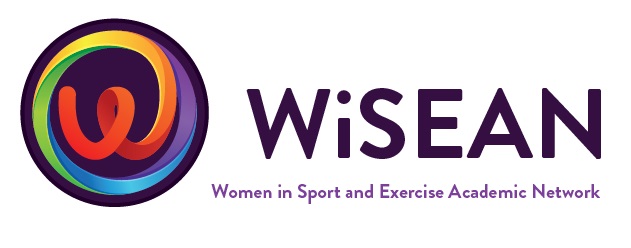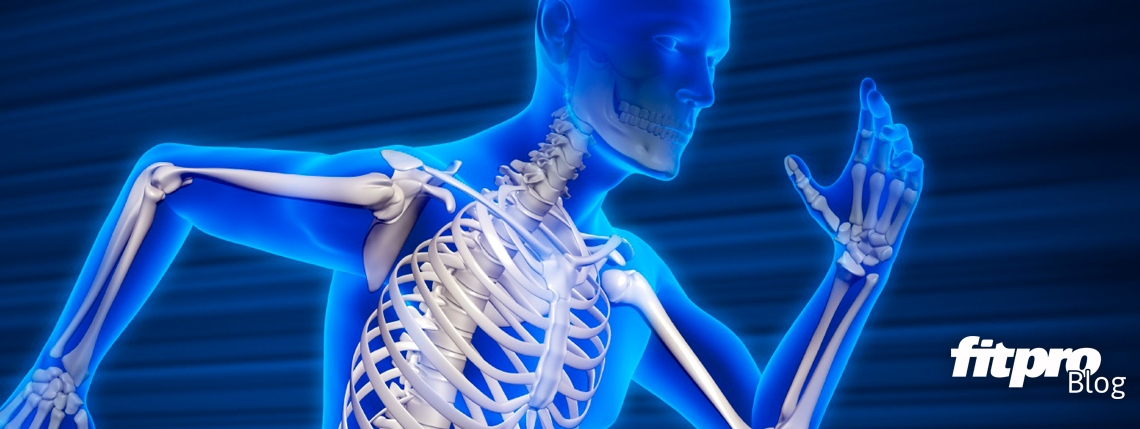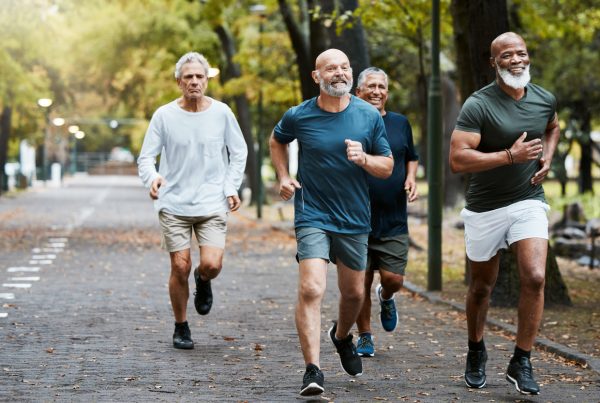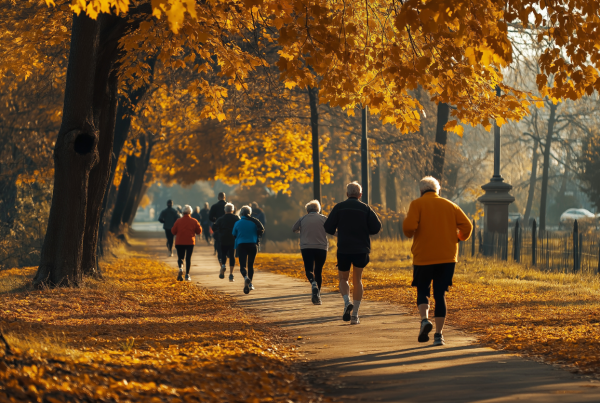In the UK, one in two women, and one in five men over the age of 50, suffer from fractures caused by osteoporosis (low bone health)1, which can have devastating effects on an individual’s quality of life. The role of the fitness professional in promoting exercise to improve people’s bone health is important in preventing osteoporosis, as Jacky Forsyth explains.
For women, oestrogen is an important determinant of good bone health. When oestrogen levels are low, there is increased bone resorption (breaking down) and lower bone accrual (building). A natural drop in oestrogen occurs around the menopause, but also may occur due to menstrual irregularities and because of progesterone-only contraceptive use. To combat these suboptimal levels of oestrogen in women, and to ensure optimal bone health in men, bone-targeted, multi-component exercise, such as muscle-strengthening exercise, and exercise that is dynamic, of high impact, discrete (with rest bouts) and unusual, with all areas of the body targeted, should be recommended2.
Remember, though, that very high levels of exercise, particularly if coupled with energy deficiency and menstrual dysfunction (conditions associated with the Female Athlete Triad), can lead to bone decrements in exercising females. For the lower body, small bouts of jumping (e.g., 10 jumps daily, with 10-second rest intervals) is beneficial for bone3. For the upper body, conventional resistance training (approximately three sets of eight to 12 reps), plus more unique types of exercise, such as tennis ball squeezes, hanging from a gymnastics ladder and dropping with an outstretched arm onto a wall, seem to be beneficial for the bone4.
Jacky Forsyth, BA, QTS, MPhil, PhD, will be exploring this topic in greater depth in the Autumn magazine – out on the 1st September. If you aren’t already receiving the Fitpro magazine, sign up today: https://www.fitpro.com/membership/ We will also be providing a hand – out for your clients on osteoporosis.
These types of research-based findings will form part of the content of our upcoming conference, “Women in Sport and Exercise Conference 2018: Blood, Sweat and Fears”, being held on 13-14 June 2018. The aim of the conference is to debate female-specific sports and exercise medical issues, and to raise awareness of the issues and opportunities for women’s exercise participation. Conference keynotes come from Annamarie Phelps CBE OLY, vice chair of the British Olympic Association and an advocate for safe and inclusive sport for all; Angela Smith, who was instrumental in the formation of the women’s squash professional organisation and circuit; and Lisa O’Keefe, insight director at Sport England, who will be sharing the story behind their ‘This Girl Can’ campaign.


There will also be invited and guest speakers, from university academics, medical professionals and from organisations such as Women in Sport. Topics include: nutrition for the exercising female; cardiovascular health, female hormones and exercise; lifestyle interventions for women’s health issues; breast biomechanics and health implications; bone health; female sports endocrinology; concussion and the female athlete; the benefits and risks of menstruation and sport; the menstrual cycle and hormonal contraceptives; body image; physical activity for pregnant women; iron deficiency; gender diversity in women’s coaching; male/female differences in pacing, fatigue and tactics of winning races; the impact of puberty on girls’ attitudes towards sport; a performance psychology approach to building confidence; motherhood as an athletic career transition; homophobia; and diversity. The conference is endorsed (which includes continuous professional development [CPD] points) by the Register of Exercise Professionals (REPS), British Association of Sport and Exercise Sciences (BASES), Chartered Institute for the Management of Sport and Activity (CIMSPA) and British Sports Medical Journal, with support also from Women’s Sports Network, C-Motion Research Biomechanics, Routledge, Fitrwoman, and PhysiYoga Designs Ltd.
For more information: http://www.staffs.ac.uk/womeninsport/ @WiseConf18
References
- Weaver, C. M., Gordon, C. M., Janz, K. F., Kalkwarf, H. J., Lappe, J. M., Lewis, R., … Zemel, B. S. (2016). The National Osteoporosis Foundation’s position statement on peak bone mass development and lifestyle factors: a systematic review and implementation recommendations. Osteoporosis International : A Journal Established as Result of Cooperation between the European Foundation for Osteoporosis and the National Osteoporosis Foundation of the USA, 1281–1386. http://doi.org/10.1007/s00198-015-3440-3
- Babatunde, O. O., Forsyth, J. J., & Gidlow, C. J. (2012). A meta-analysis of brief high-impact exercises for enhancing bone health in premenopausal women. Osteoporosis International, 23(1), 109–119. http://doi.org/10.1007/s00198-011-1801-0
- Babatunde, O., & Forsyth, J. (2014). Effects of lifestyle exercise on premenopausal bone health: a randomised controlled trial. Journal of Bone and Mineral Metabolism, 32(5), 563–72. http://doi.org/10.1007/s00774-013-0527-9
- Forsyth, J. J., Babatunde, O, Hind, K., & Paskins, Z. (2017). A systematic review and meta-analysis of upper body exercise interventions to prevent/treat low bone health of the wrist and forearm. Available from http://www.crd.york.ac.uk/PROSPERO/display_record.php?ID=CRD42017069545







